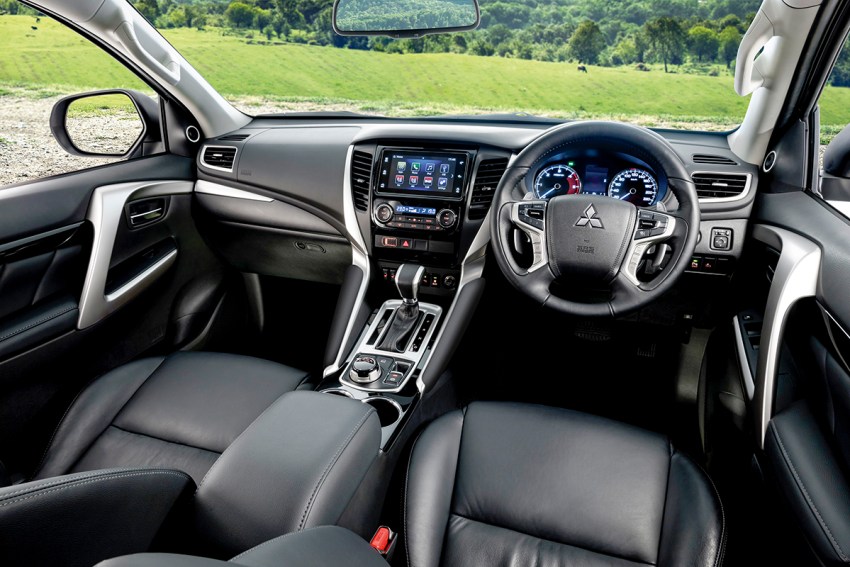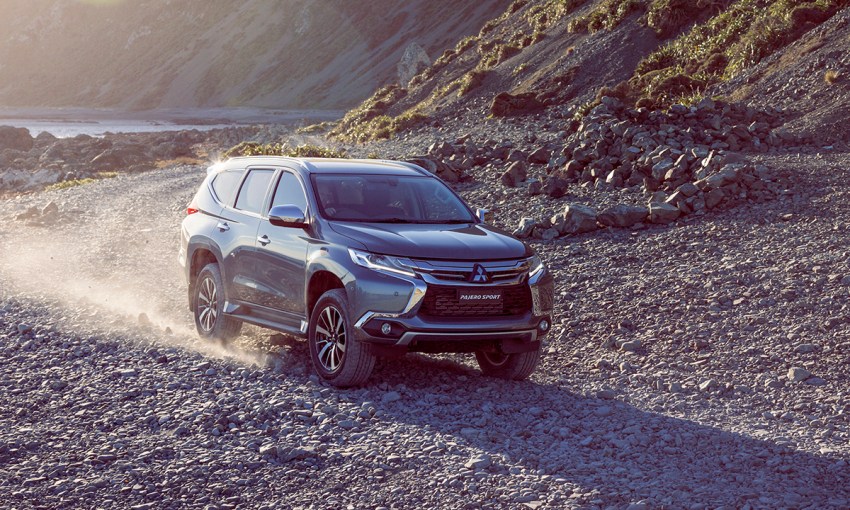Whether you have a large family to get to school in the morning or a vast expanse of outback to conquer, the Pajero Sport will get you there safely.
Motoring: A good sport
There’s a lot to like about Mitsubishi. It’s one of those car companies that simply goes about its business, without making a huge fuss, and without making changes to every model in its line-up every year or so, just so you can be talked into upgrading.
And some of its models seem to have been around forever. The ASX small SUV is mocked for being “dated”, but it’s still one of the biggest sellers in its class, and because the current model doesn’t look hugely different from previous models, one of the bonuses for existing owners is that it holds its value.
Like other car companies, Mitsubishi amortises its costs by using the same platform (or underpinnings) across different models. You may not know it, but the Toyota Fortuner is really a HiLux with a different body. It’s a similar story for the Ford Everest which is a Ranger under the skin. Isuzu MU-X? It’s a D-Max. And Mitsubishi’s Pajero Sport is really a Triton in a smarter-looking suit.
The Pajero Sport doesn’t look like a Triton, or the regular Pajero. Its slightly smaller size (than the Pajero) and 11.2 metre turning circle make it ideal for trekking across town and liberal use of chrome, especially if you choose the right exterior colour (all of which other than white attract a premium), makes it a smart looker, although some people find the “melting” rear tail lights a bit much.

The Pajero Sport may be smaller than the Pajero, but it’s still a spacious five-door wagon with either five seats (Pajero Sport GLX) or seven seats (Pajero Sport GLS and Exceed). Like others of its ilk, you can choose between rear-wheel drive or full-time four-wheel drive for on-road use, and there’s low range gearing for when things get really challenging. The four-wheel-drive version is hugely accomplished off-road and rugged enough to take the kind of inhumane treatment serious off-roaders seem to like dishing out to their long-suffering vehicles.
One of the greatest improvements in 4WD vehicles over recent years is how good they can make even a novice off-roader look. The Pajero Sport makes all the tough decisions for you, once you’ve told it, using a button on the console, whether you’re tackling gravel, sand, mud/snow or rocks. On steep inclines, hill start control stops the car from rolling backwards when starting off and limits the downhill speed.
The engine in the Pajero Sport is just like the one in the Triton. It’s a four-cylinder turbo diesel, mated to an eight-speed automatic gearbox. It’s civilised, reasonably quiet and economical (the official consumption is 8L/100km, but you’ll get closer to 10, and a lot worse if you’re towing).
Of course, some people may wonder if driving an SUV derived from a ute means it will be a little agricultural, but the Pajero Sport rides smoothly and quietly, and is generally a lot nicer place to be than the Triton (which is not to say the Triton is unpleasant, just designed for a different target market). The Pajero doesn’t feel particularly large or cumbersome and the better ride is down to a revised rear suspension (the ute gets load-carrying leaf springs while the Pajero Sport sits on more compliant coil springs). As you’d expect for a vehicle that has to balance on-road performance with off-road ability, the soft ride means some body roll in corners. The selectable full-time 4WD comes into its own on slippery roads, unlike some others that only allow you to select 4WD on unsealed surfaces.
Safety, as befits a vehicle that will do a lot of family carting duty, is excellent, thanks to seven airbags, reversing camera, autonomous emergency braking, adaptive cruise control and a raft of acronyms for all sorts of safety systems. The seven-seat GLS and Exceed models get airbags that extend beyond the third row of seats, and the Exceed tops the safety scale with blind-spot monitoring and an ingenious system of automatic braking that intervenes if you mistakenly press the accelerator when approaching an obstacle.
The Pajero Sport kicks off at $46,490 and rises to $54,490 (plus on-road costs) for the top-of-the-range Exceed, making it good value against the competition. The Exceed comes with all the trinkets you expect, including leather trim, seven-inch multimedia screen with Android Auto and Apple CarPlay (but no sat nav – you’ll need to use your smartphone for that), dual-zone climate control, front seat heaters, DAB digital radio and quite a lot more.
Like most car companies (with the notable exception of luxury brands), Mitsubishi offers a five-year warranty and capped price servicing for complete peace of mind.
All in all, the Mitsubishi Pajero Sport, much like Mitsubishi itself, simply does what it’s designed to do with a minimum of fuss.
Confirm prices with dealer and add statutory on-road costs and dealer delivery.
This story first appeared in the August 2019 issue of SALIFE magazine.



